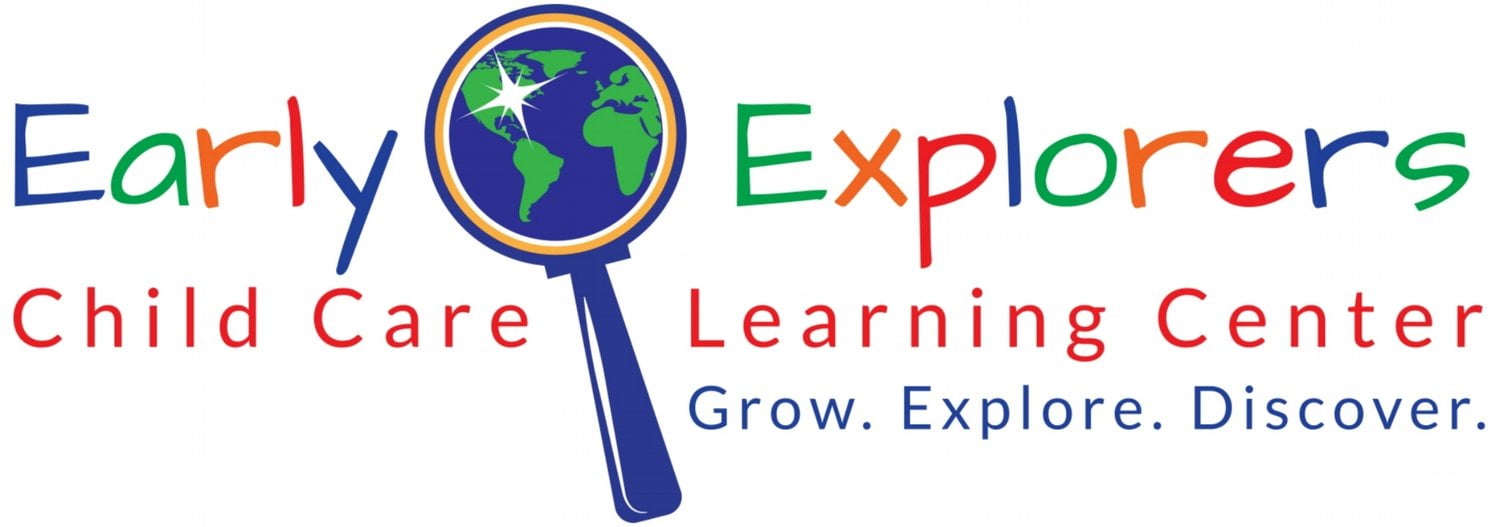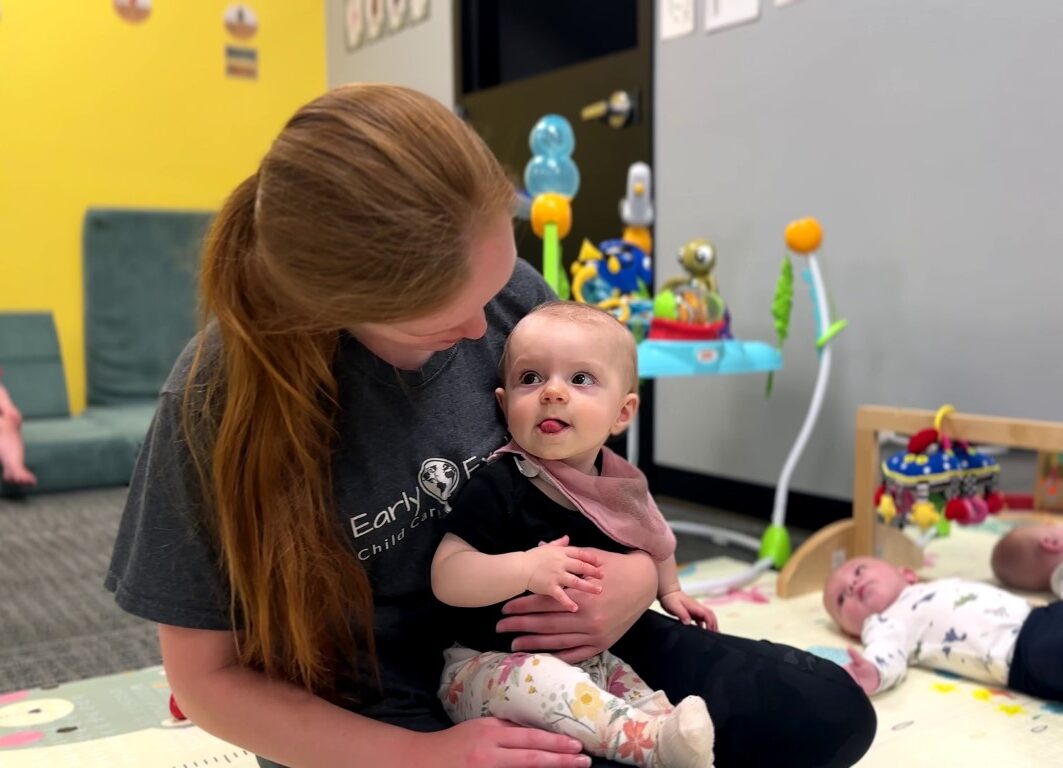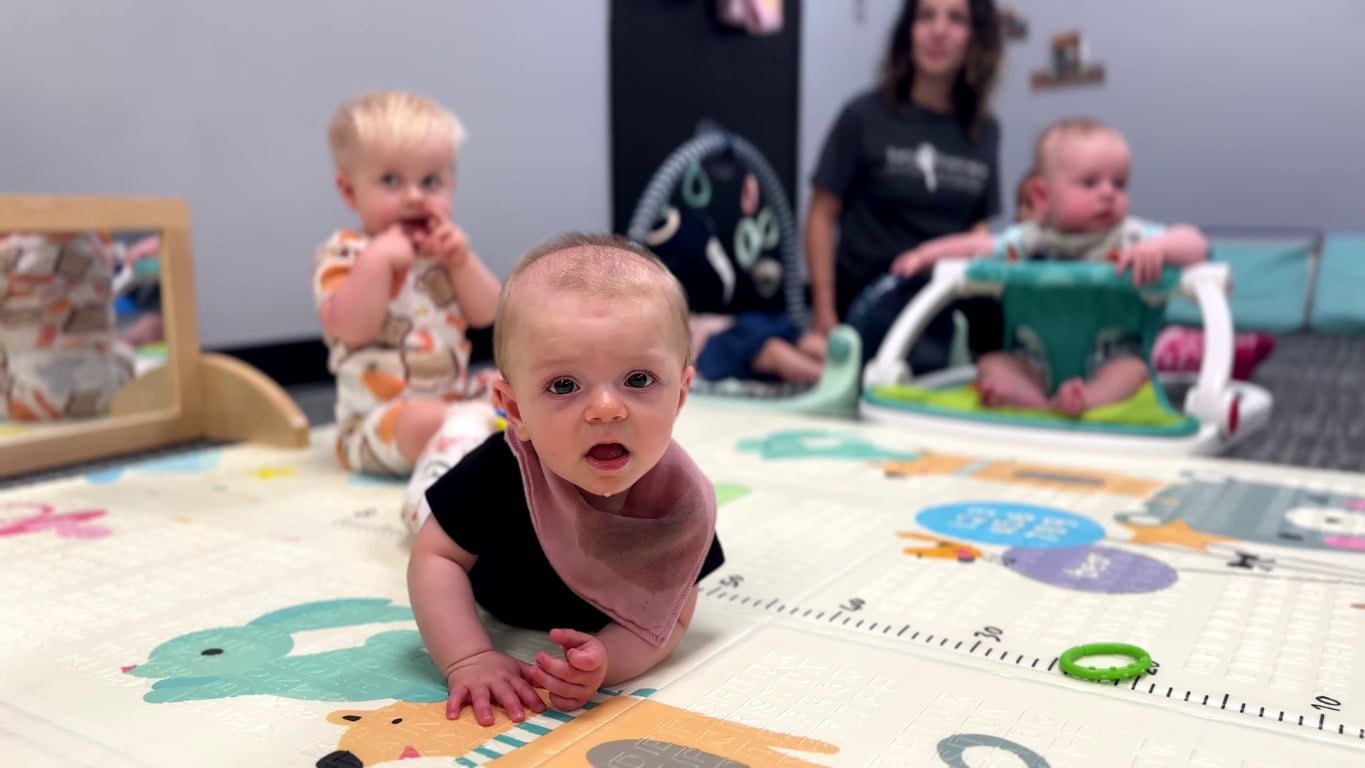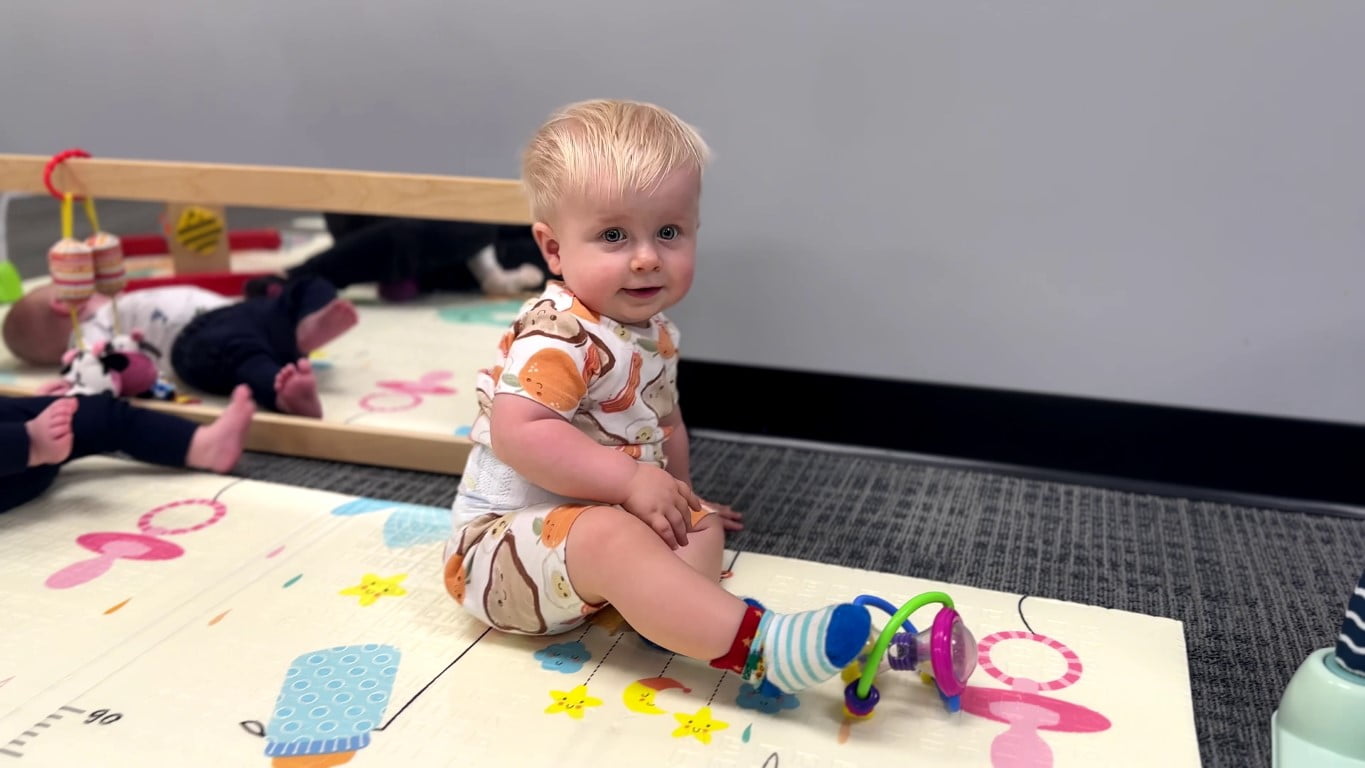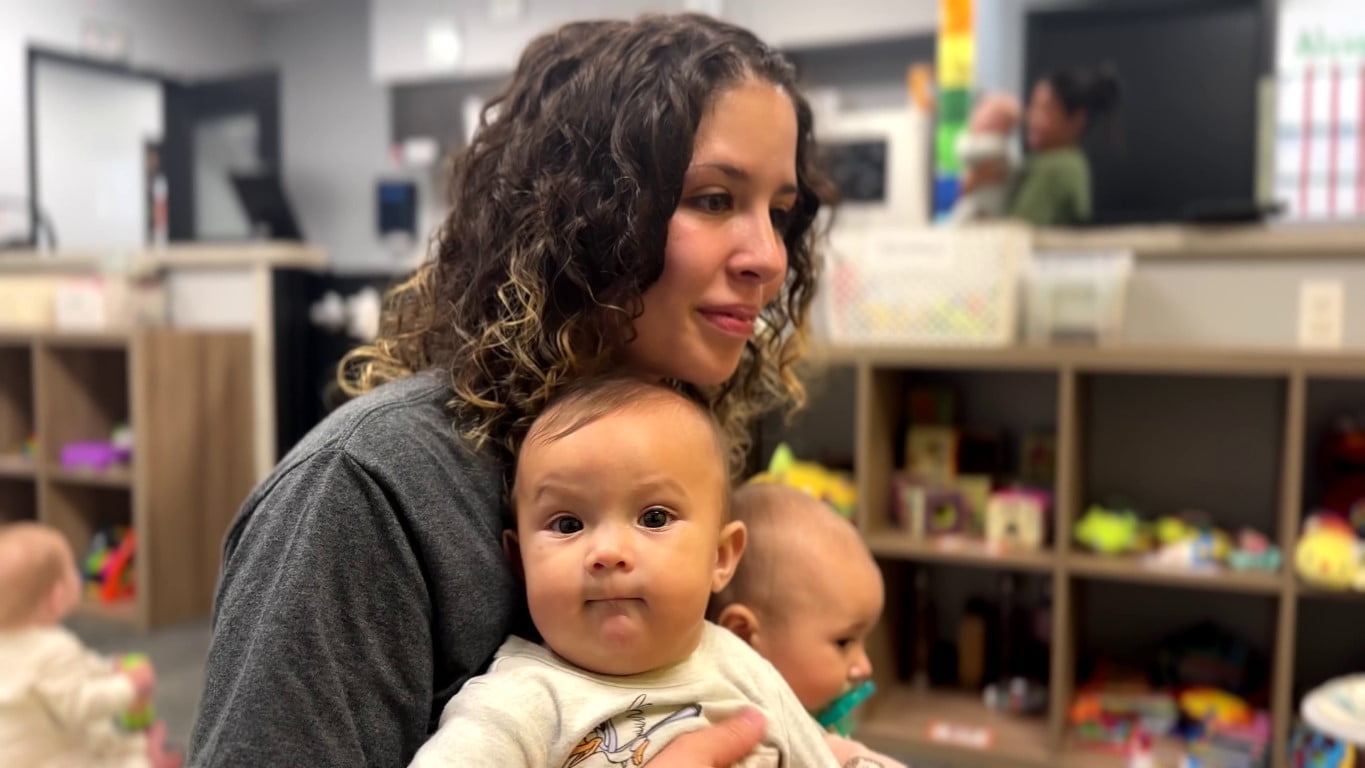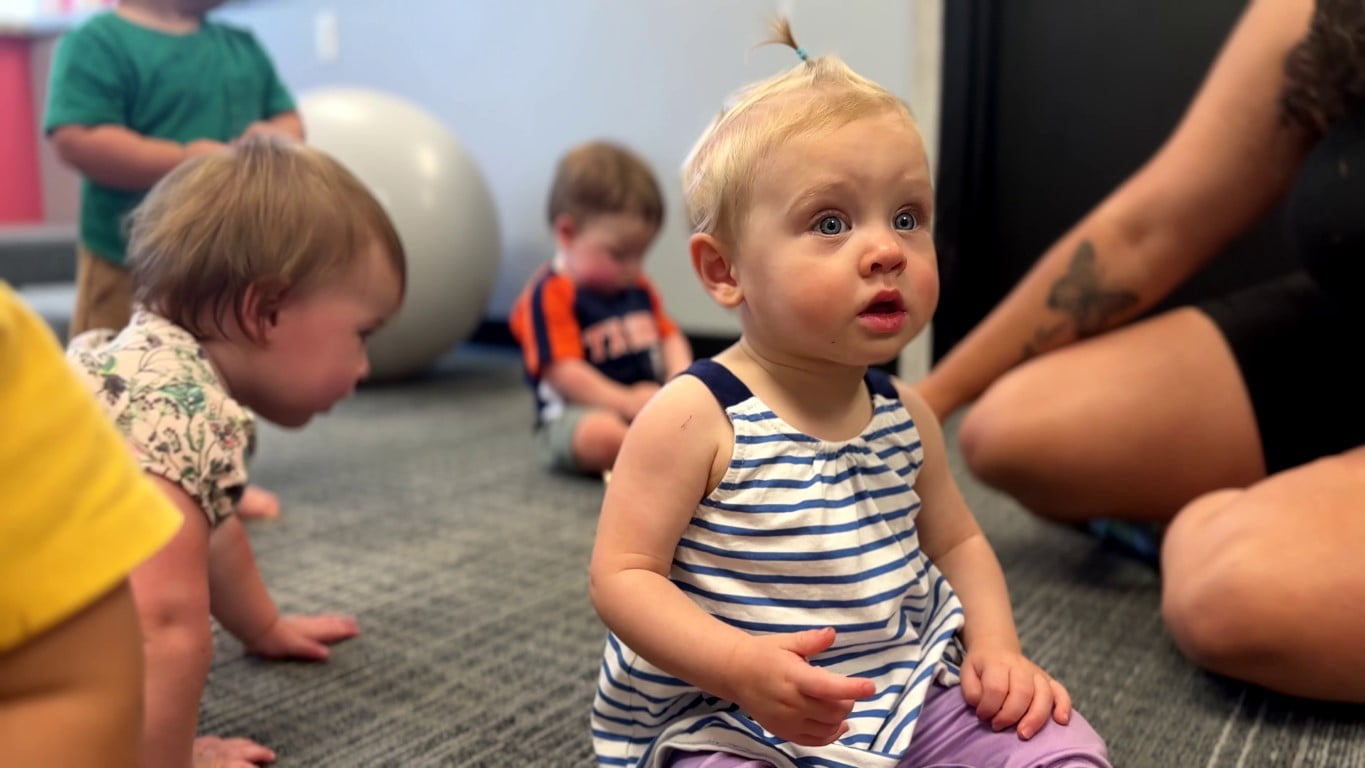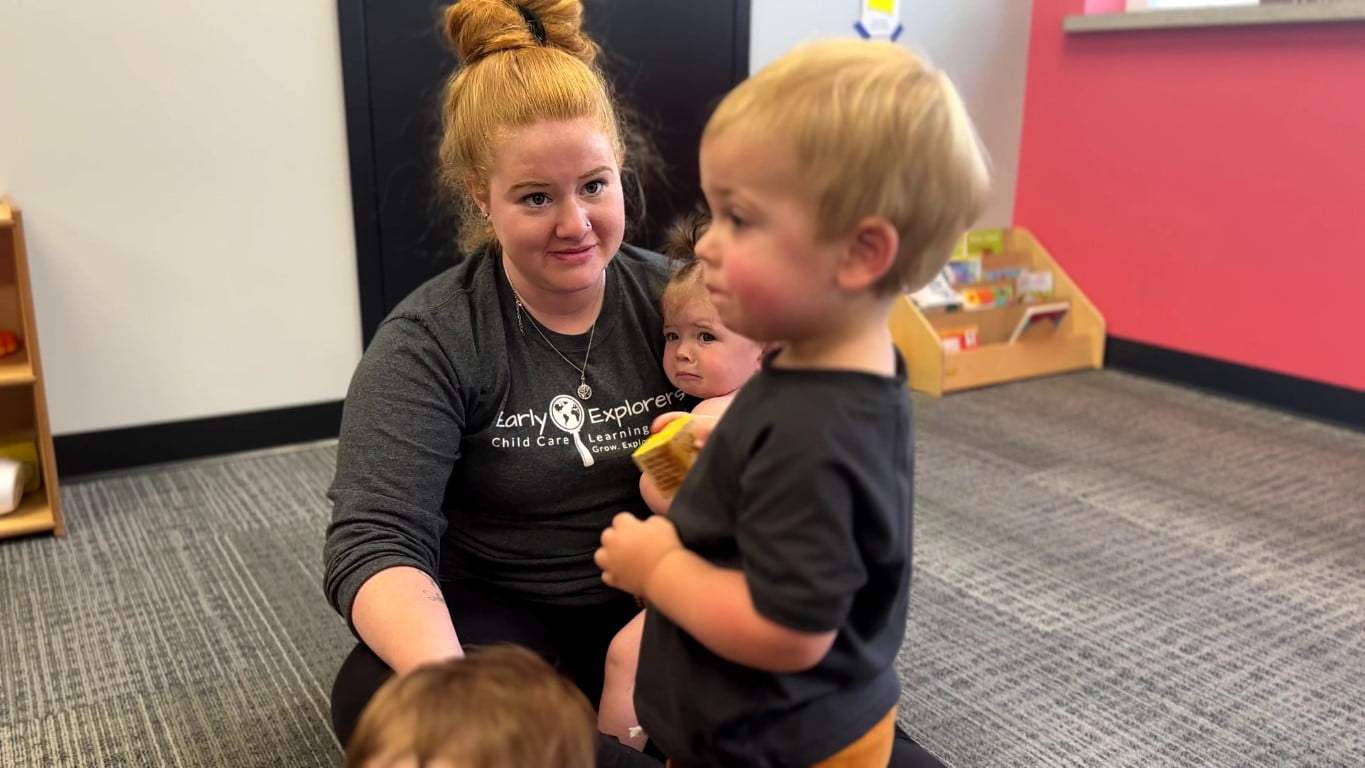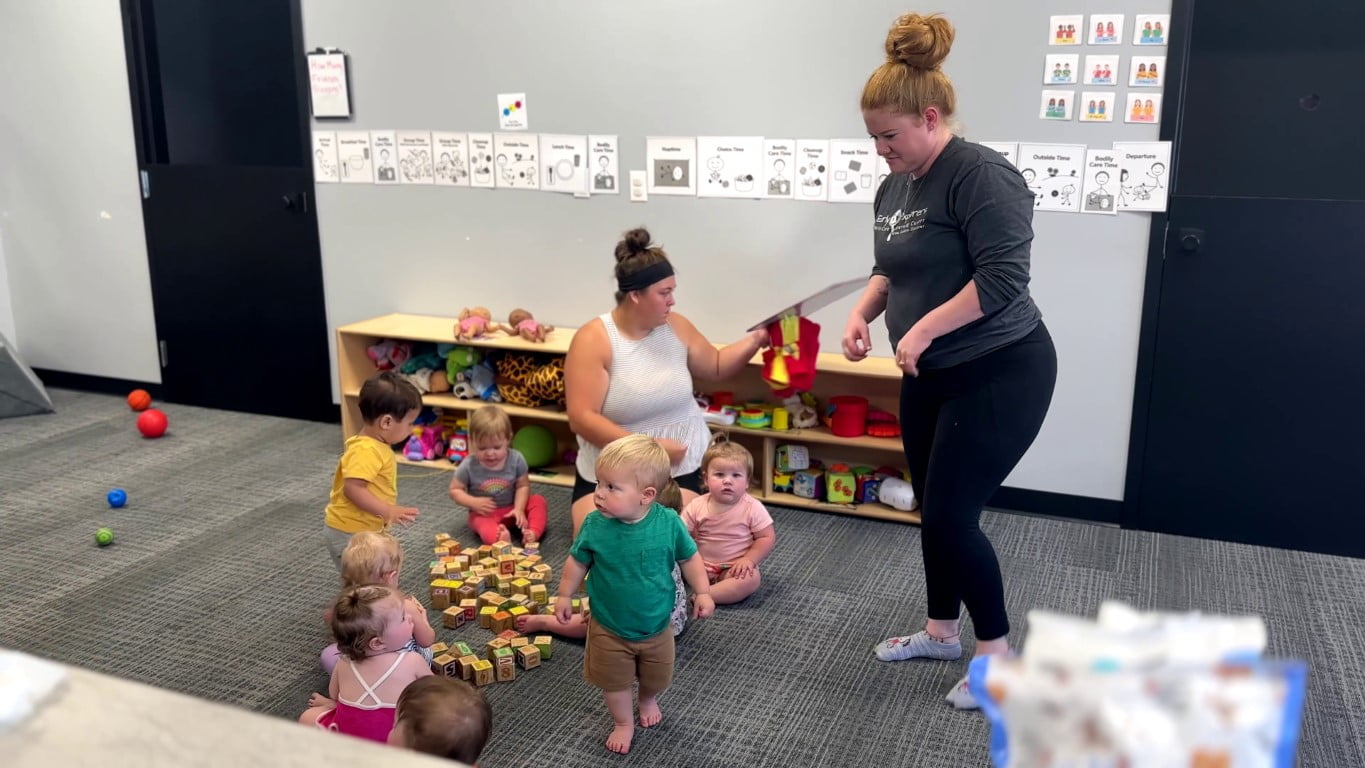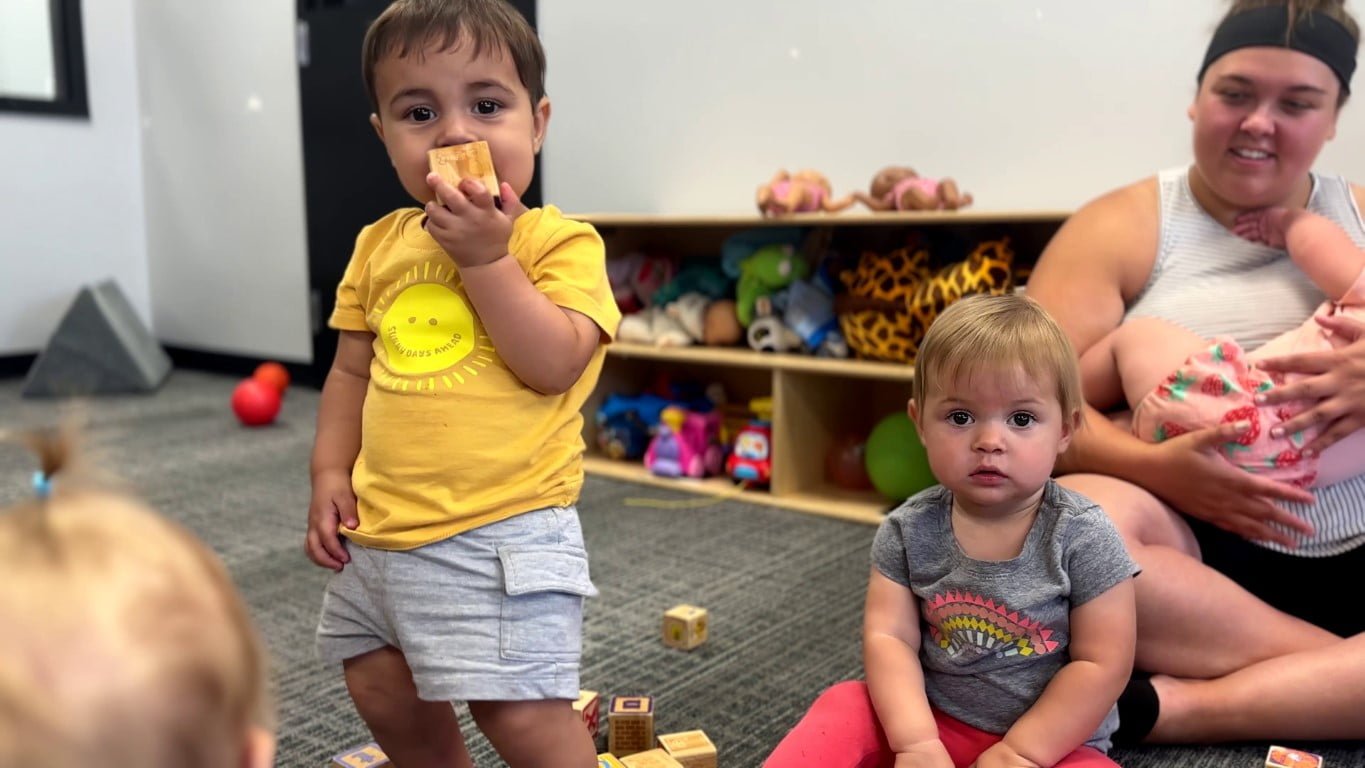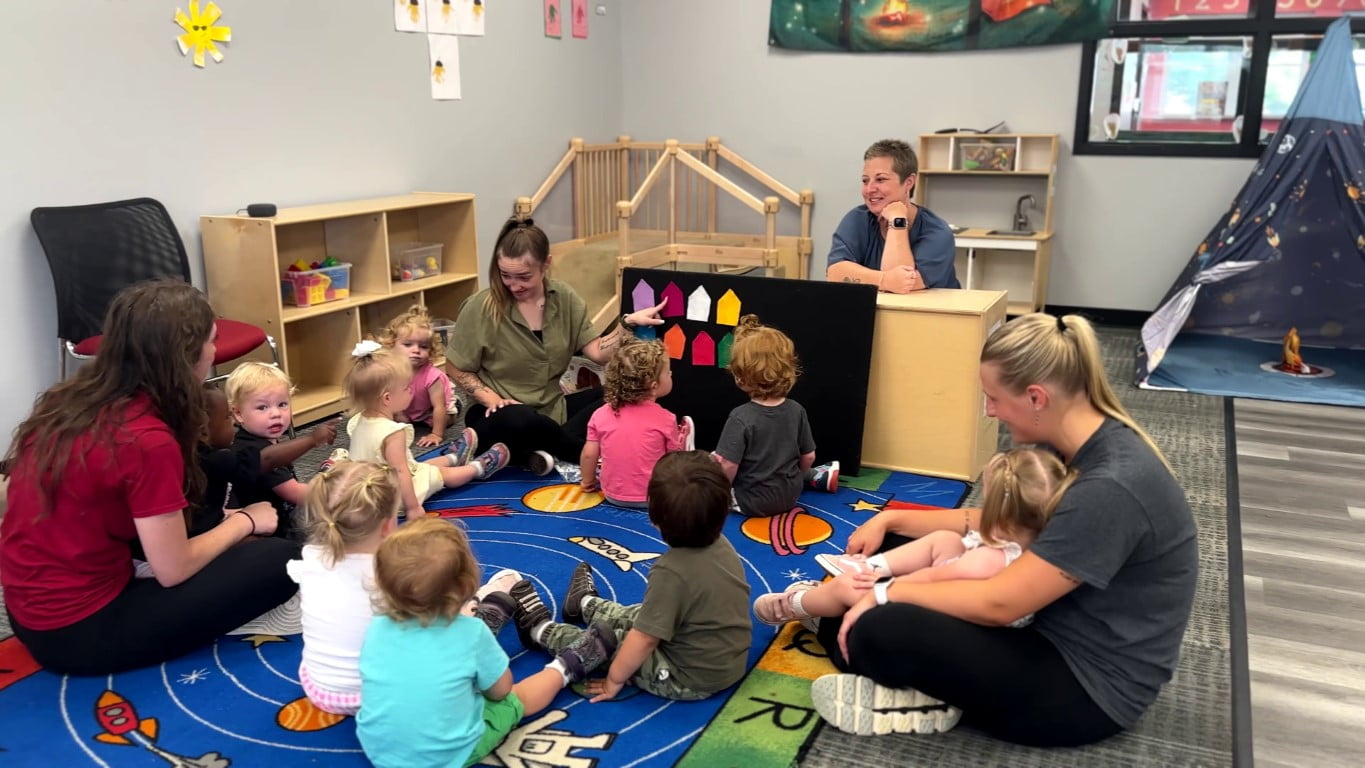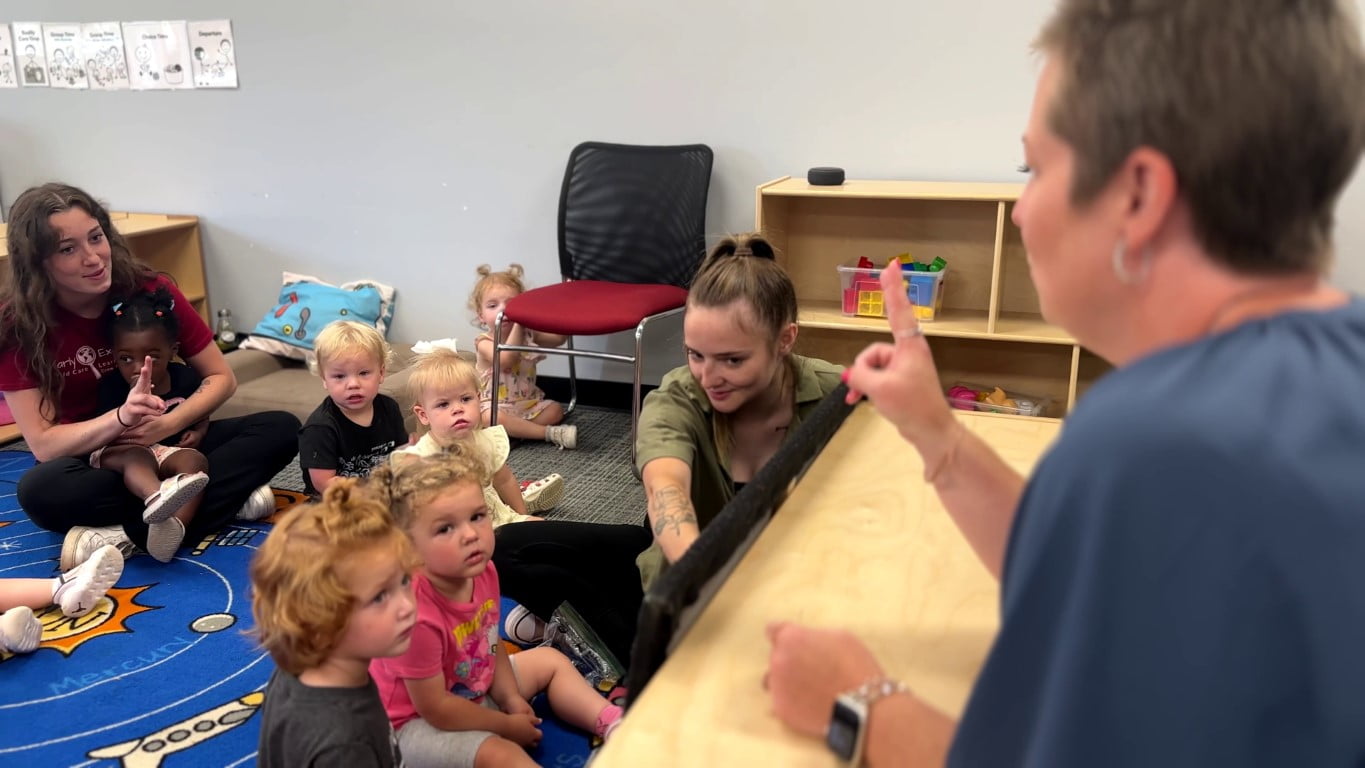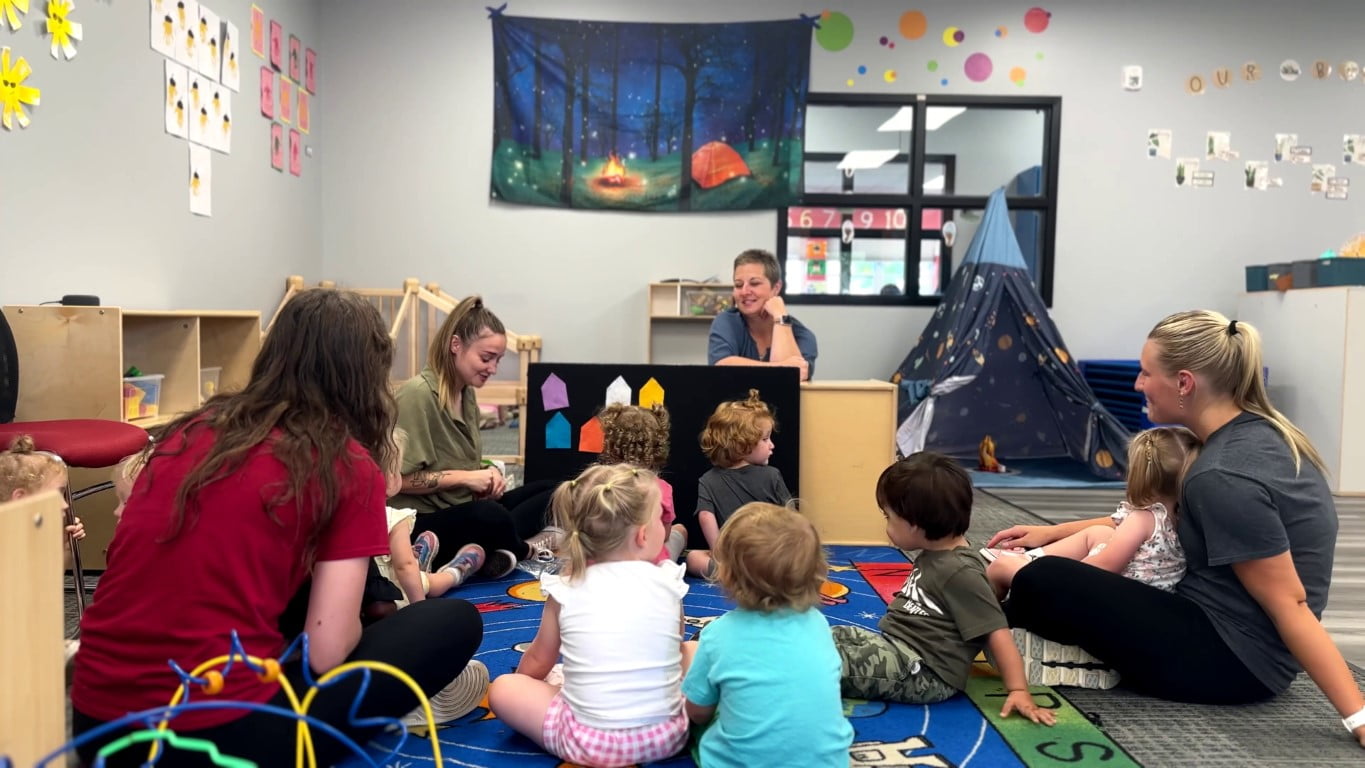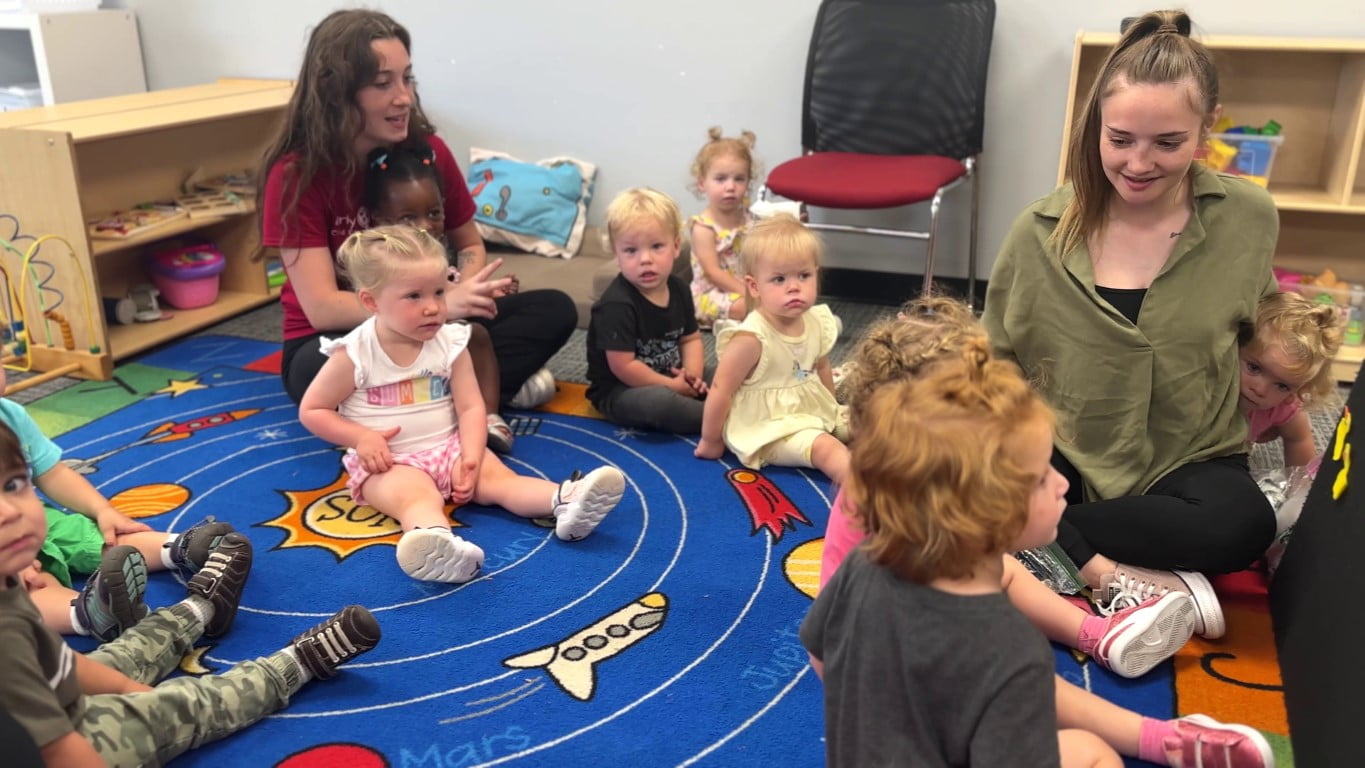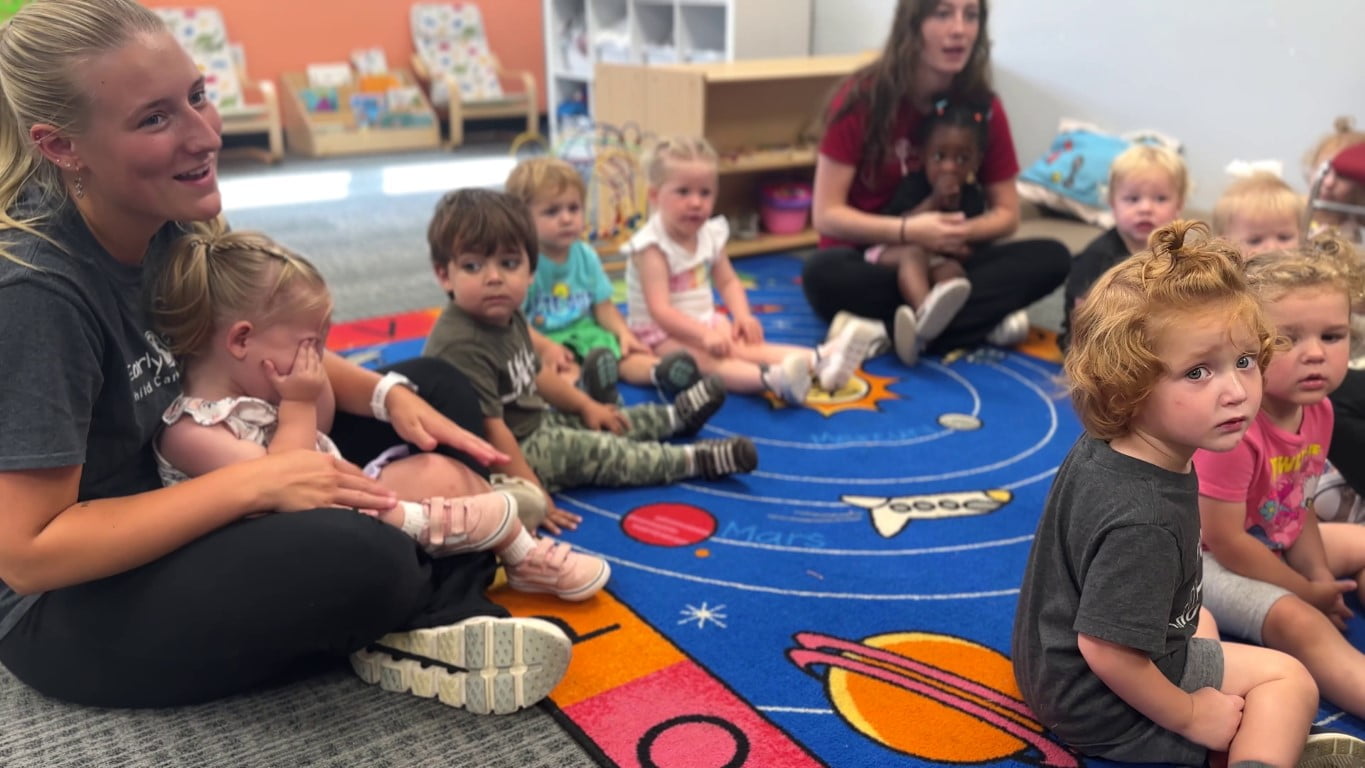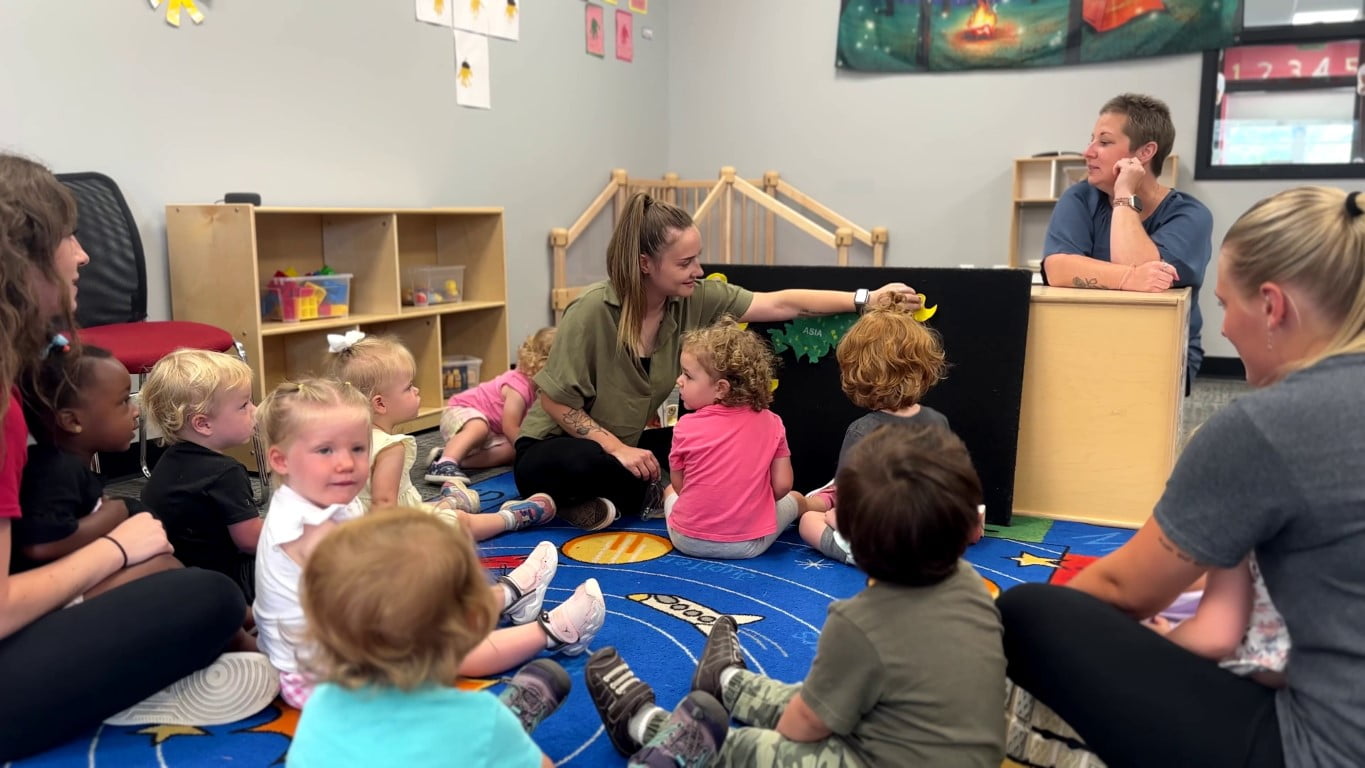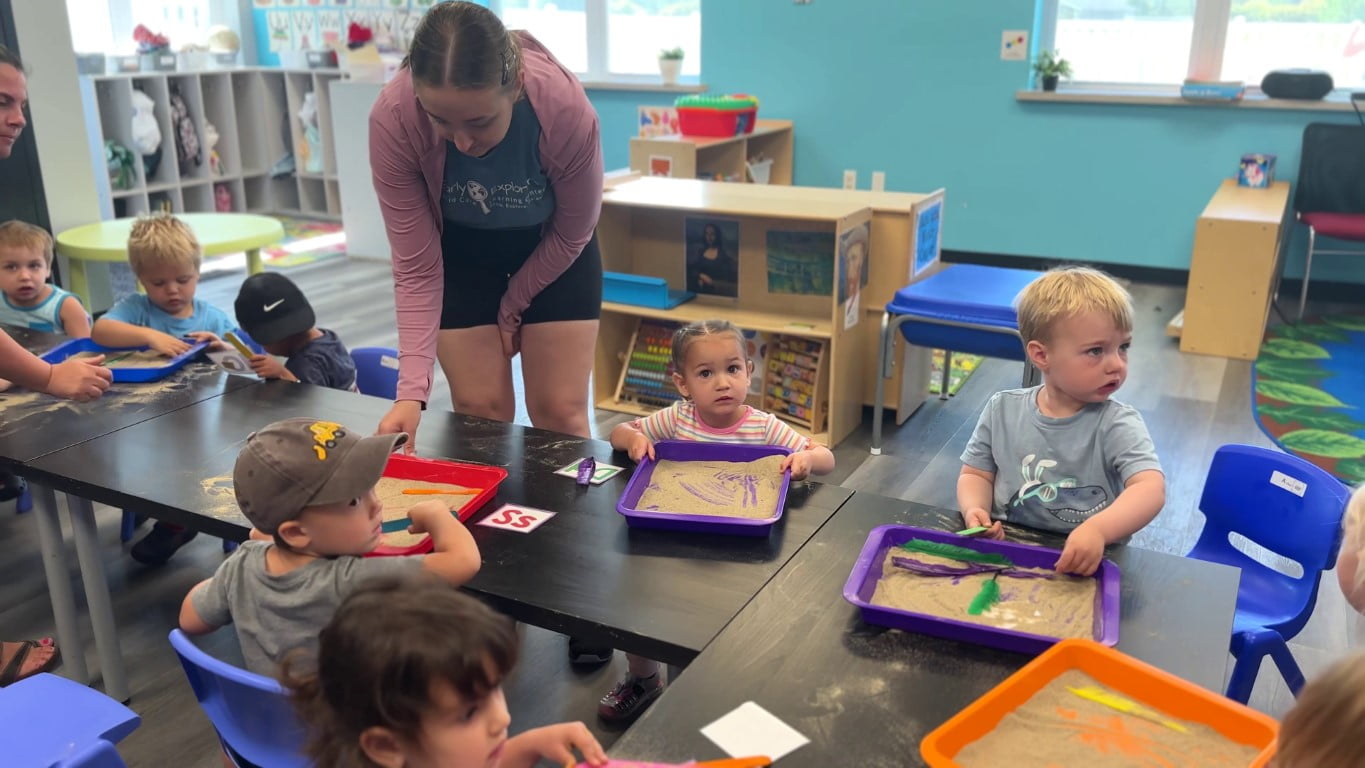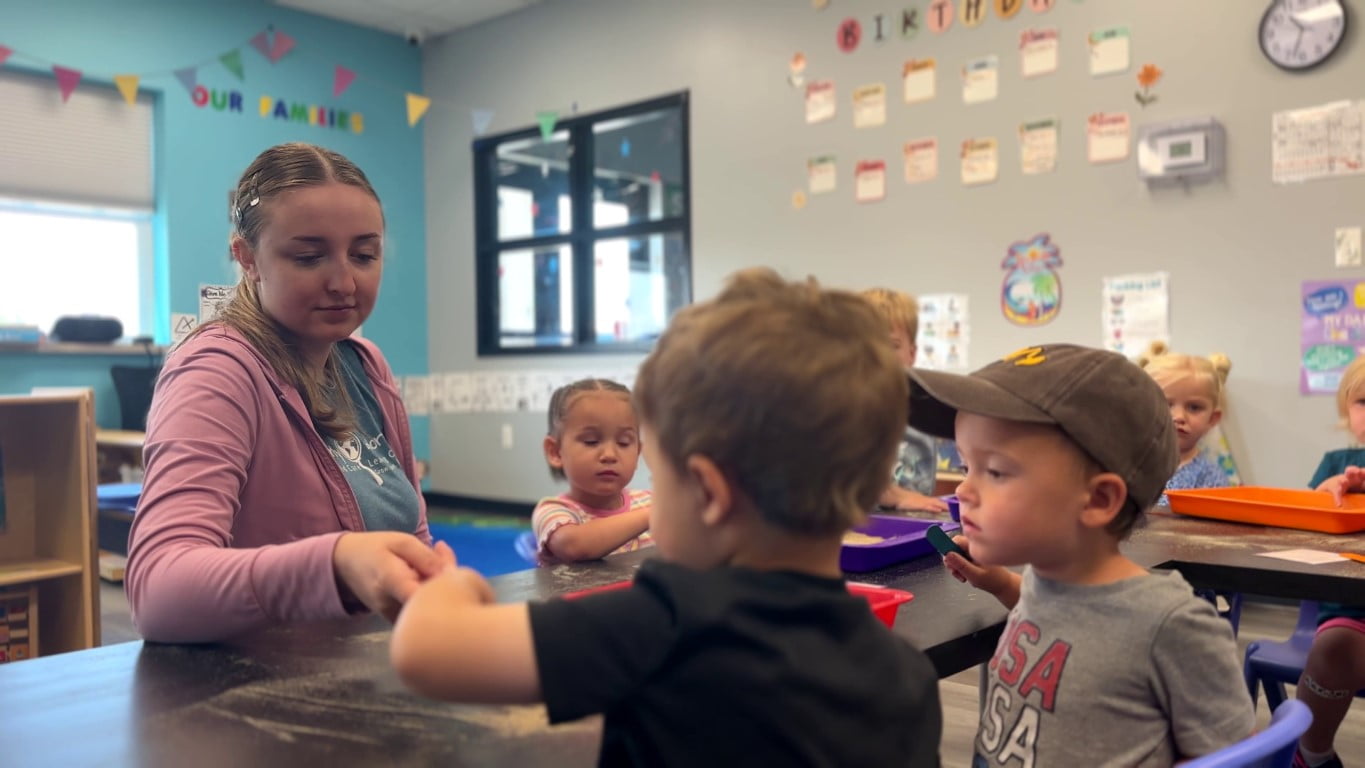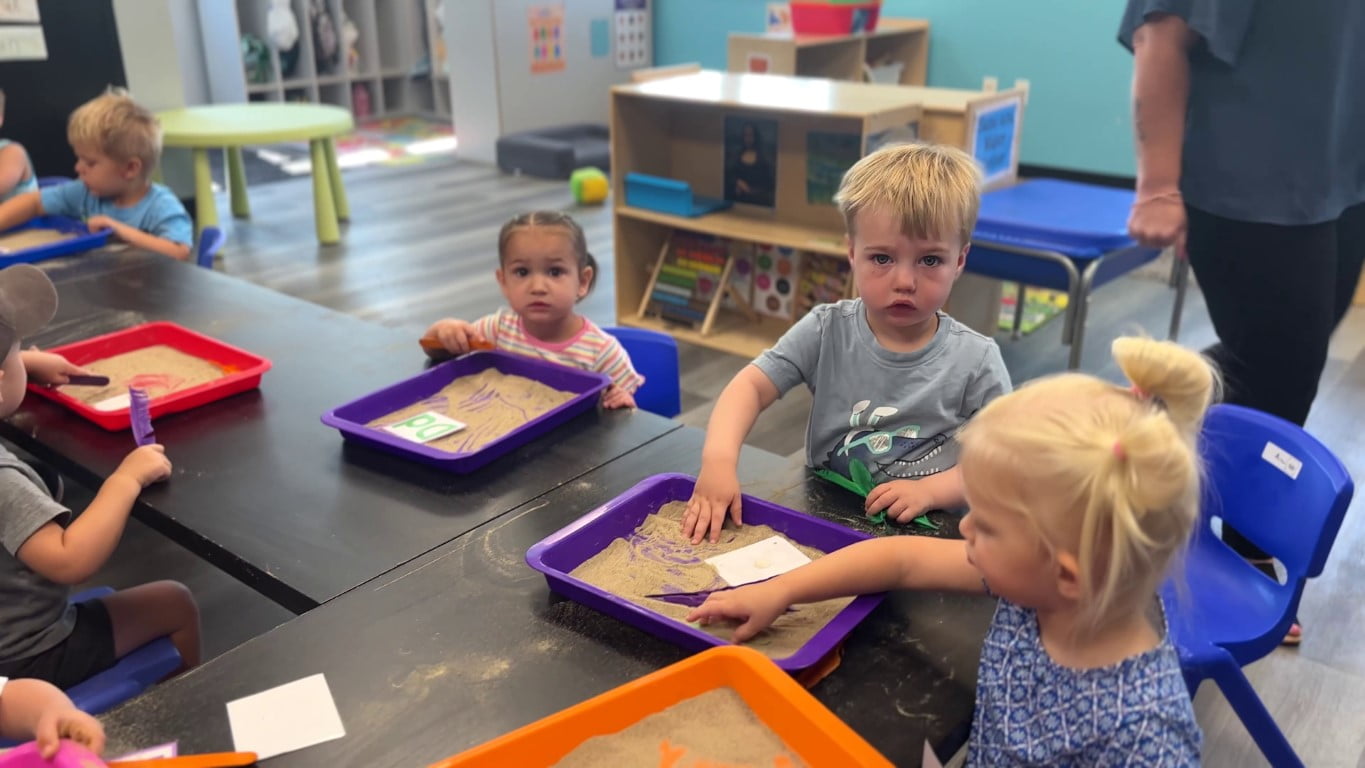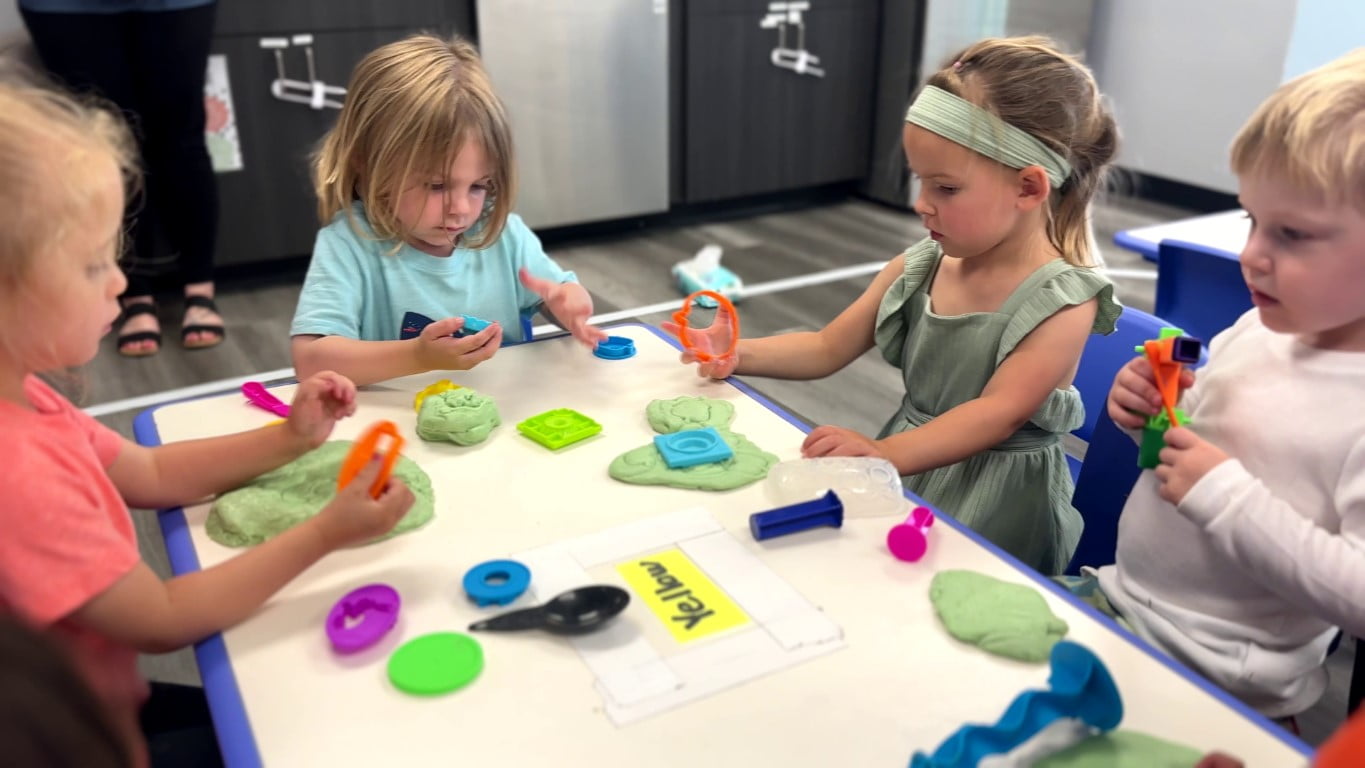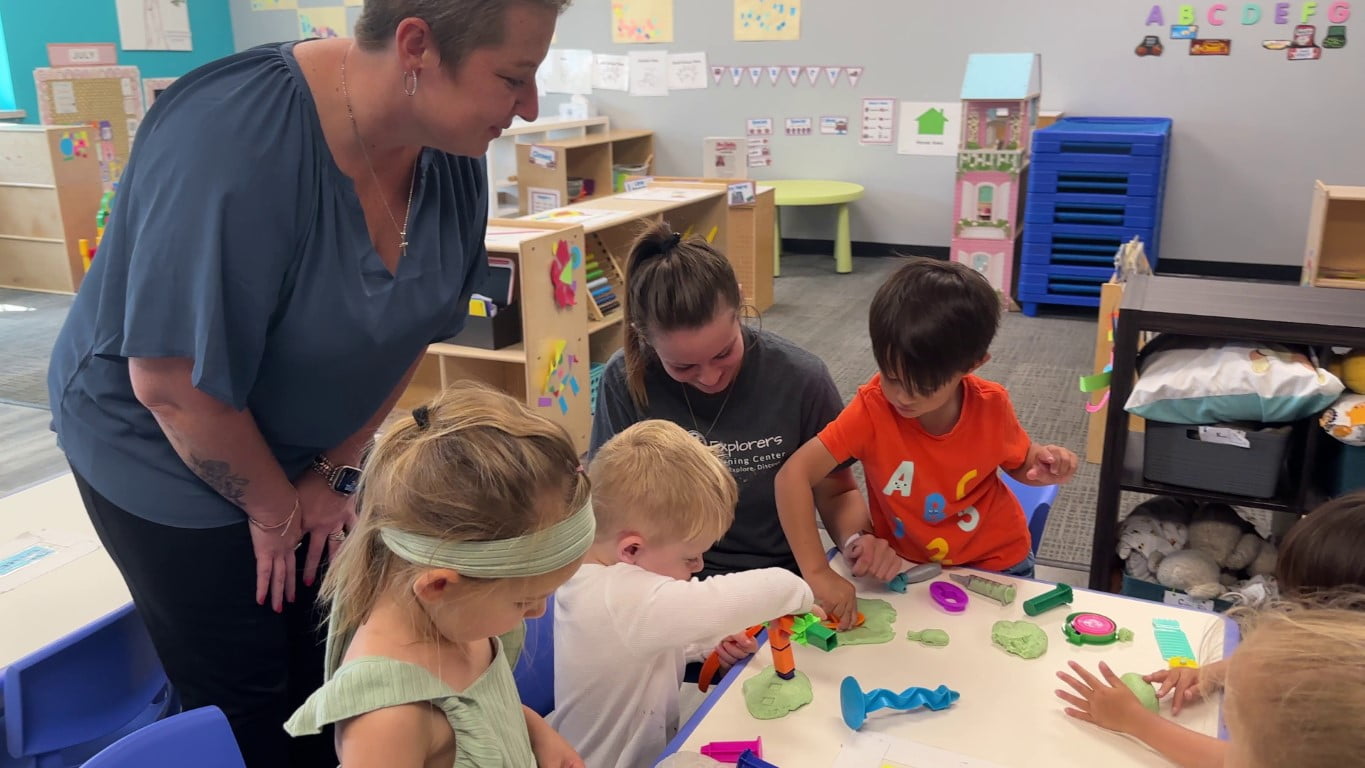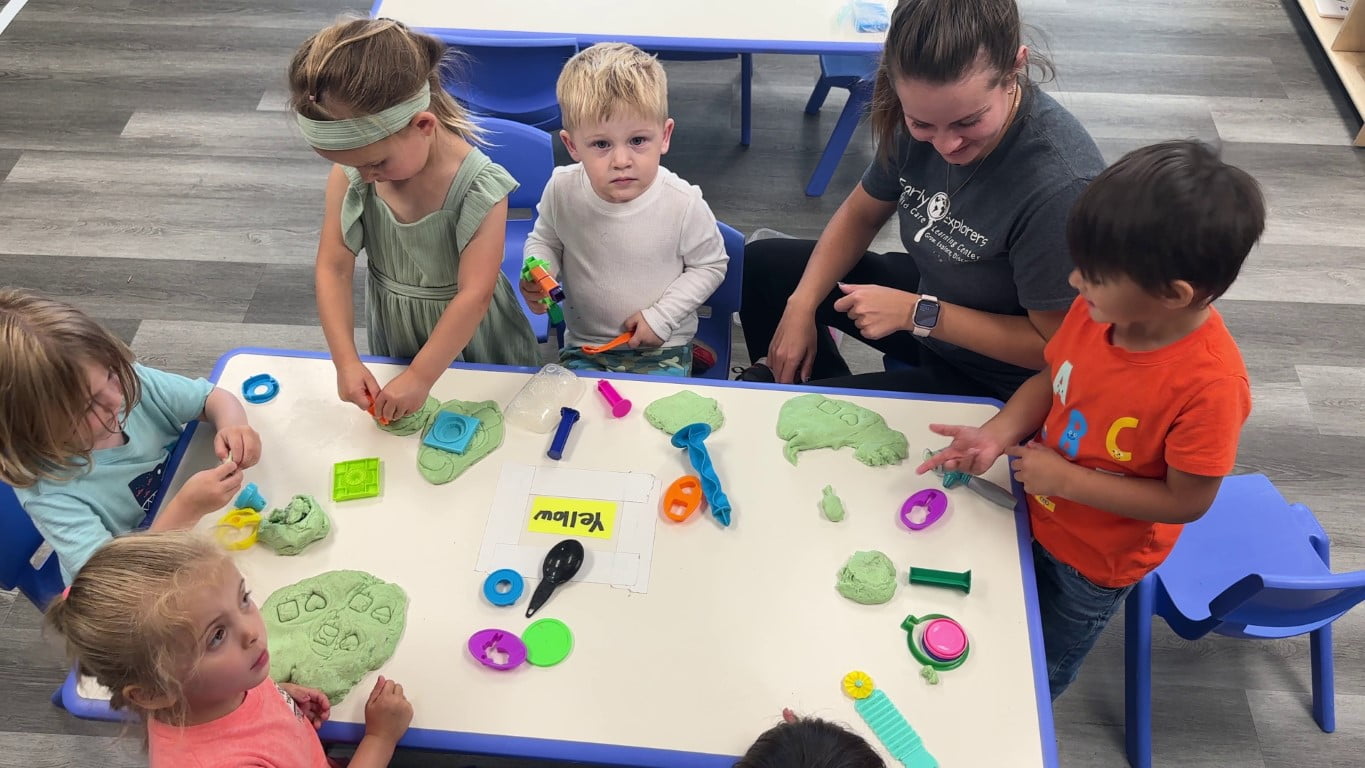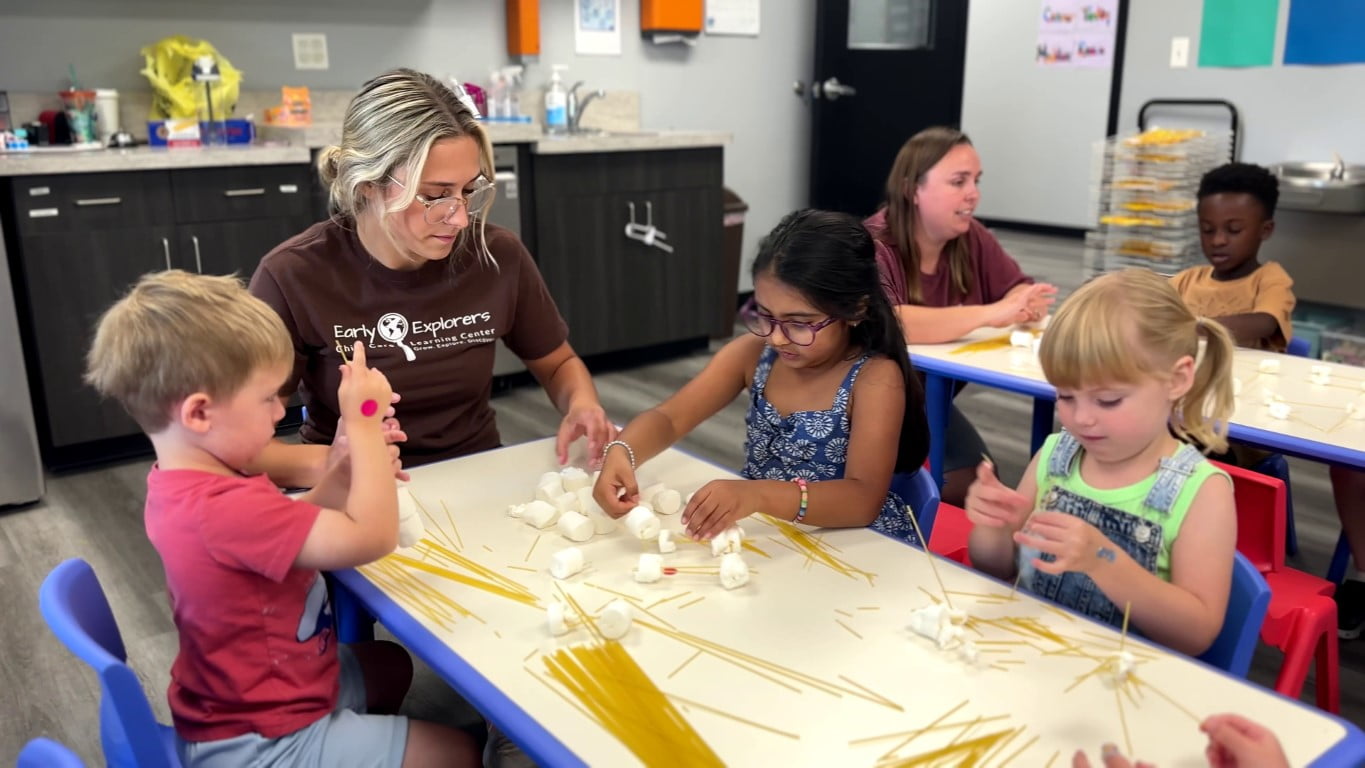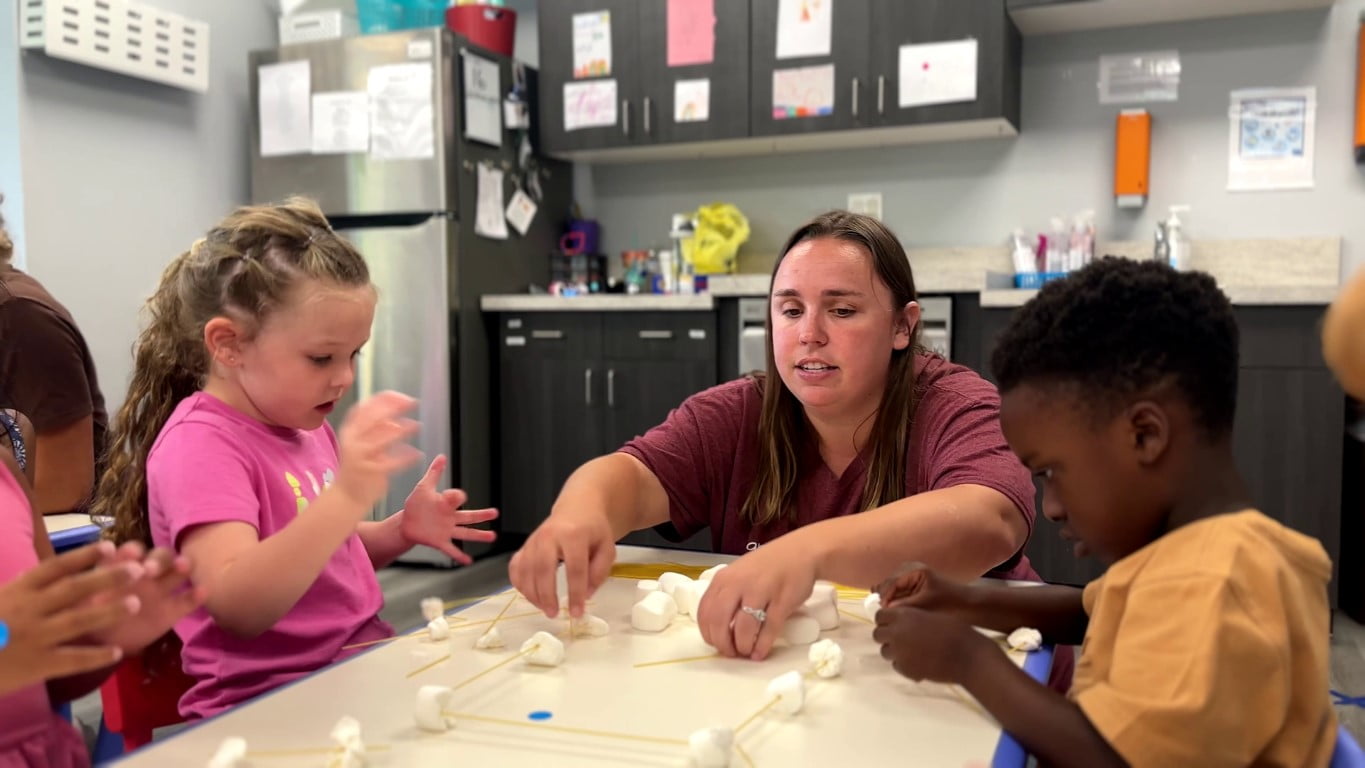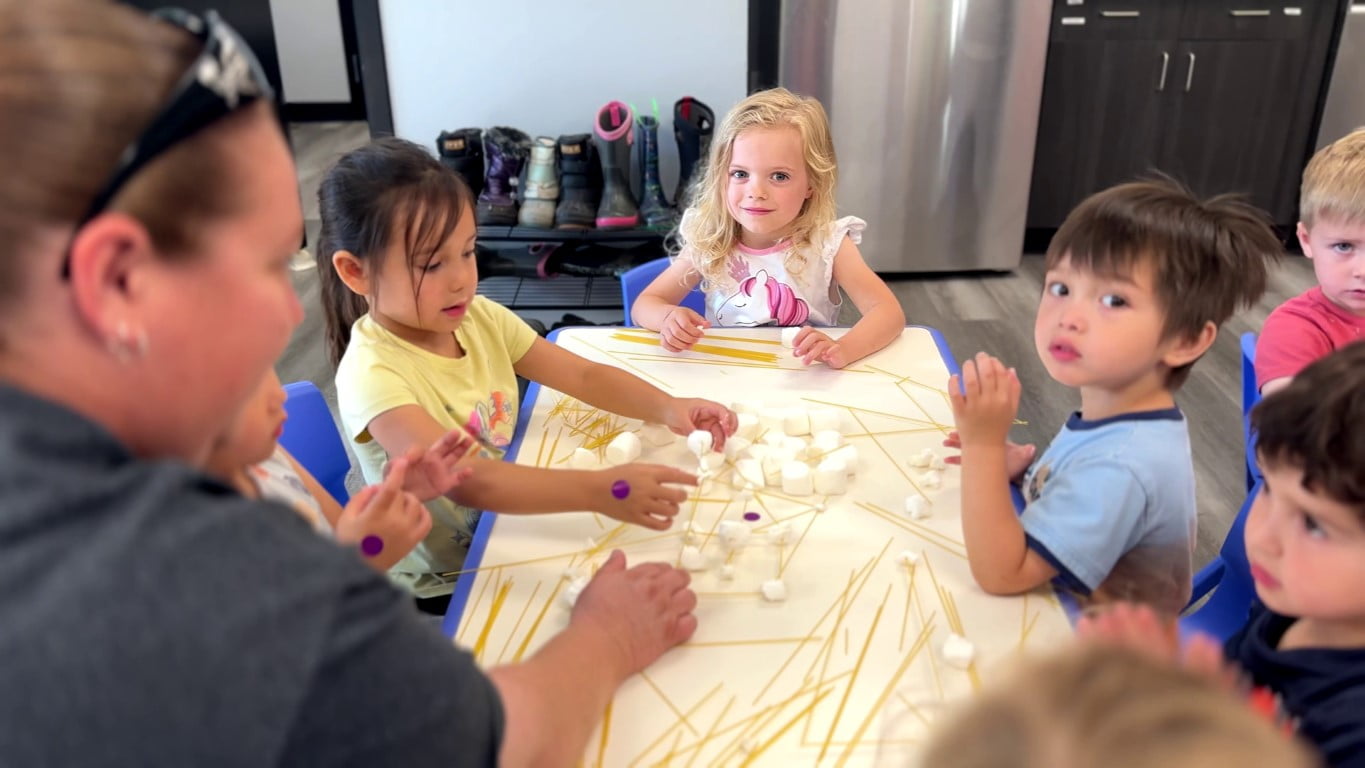Infant Program
Ages birth to 12 months
GROWING EXPLORERS INFANT PROGRAM INCLUDES:
- A Safe and Secure Environment that helps foster loving relationships with the caregiver.
- STEM/STEAM Curriculum to provide early exposure to establish a strong foundation.
- Sign Language Communication techniques to maximize level of understanding.
- Daily Activities designed to coincide with physical development.
- Daily and Weekly Parental Reports to keep you informed of your child’s development
For more photos & videos…
Toddler Program
Ages 12 – 24 months
Early Explorers STEM/STEAM Discoverers Toddler Program knows the importance of a toddlers ability to understanding the world around them is one of the strongest indicators of a young child’s later capacity to excel in critical educational areas such as Reading, Writing, Science. This early capacity is a significant early indicator of future mathematical abilities.
THE DISCOVERERS TODDLER PROGRAM INCLUDES:
- A Trust Centric Environment that creates real relationships with the teachers
- STEM/STEAM Curriculum to provide an invaluable framework for future critical learning capabilities
- Sign Language Communication techniques to maximize levels of understanding
- Daily Exercises and activities designed to coincide with physical development
- Daily and Weekly Parental Reports to keep you informed of your child’s development
For more photos & videos…
Two’s Program
Ages 24 – 30 months
A STEM classroom for 2-year-olds focuses on creating an environment where toddlers can engage in exploration, sensory play, and hands-on discovery that introduce early concepts in science, technology, engineering, and math (STEM). At this age, learning is primarily driven by curiosity and play, so the design of the classroom emphasizes safety, accessibility, and simplicity while encouraging experimentation and problem-solving.
Engaging 2-Year-Olds in Early STEM Learning
- Open and Accessible Learning Space: The classroom has an open layout with designated zones for science, technology, engineering, and math, encouraging exploration and movement while ensuring safety and accessibility for toddlers.
- Hands-On Materials: Large soft blocks, stacking rings, sensory tables, and magnetic toys are used to introduce early STEM concepts through tactile and interactive play.
- Sensory and Tactile Learning: Sensory bins, tactile walls, and interactive textures engage toddlers in exploring different materials, helping them develop fine motor skills and basic STEM understanding.
- STEM Integration Through Play: STEM concepts are integrated into everyday activities with books, toys, art exploration, and problem-solving exercises that encourage creativity and critical thinking.
- Social and Emotional Learning: Group play opportunities and teacher-guided problem-solving foster communication, teamwork, and early collaboration skills.
- Outdoor Exploration and Nature Connection: Outdoor activities like nature walks, gardening, and sensory exploration of the natural environment help toddlers connect STEM concepts to the real world.
For more photos & videos…
Young Preschool Program
Ages 30 – 36 months
A Young Preschool STEM classroom designed for 2 ½ to 3-year-olds focuses on creating a nurturing and stimulating environment where young children can safely explore basic concepts in science, technology, engineering, and math. The design prioritizes sensory experiences, hands-on exploration, and open-ended play to develop early critical thinking and problem-solving skills.
Creating an Engaging STEM Environment for Young Preschoolers
- Open and Flexible Learning Areas: The classroom features spacious, defined zones for building, science discovery, and math exploration, with cozy spaces for quiet activities like reading and sensory play.
- Hands-On STEM Materials: Children engage with building blocks, magnifying glasses, nature items, water and sand tables, and basic technology tools to explore balance, observation, and early math and science concepts.
- Sensory and Tactile Learning: Sensory bins filled with rice, beans, and other tactile materials allow children to explore different textures and build fine motor skills, while varied textures throughout the classroom encourage sensory discovery.
- STEM Art and Literacy Integration: STEM-themed books and visual aids promote literacy alongside STEM learning, while creative projects involving crayons, paints, and crafts foster problem-solving and design thinking.
- Safe and Accessible Environment: Child-safe furniture, clear and labeled storage bins, and visible materials at child height foster independence, safety, and easy access to learning tools.
- Outdoor STEM Exploration: Outdoor areas with gardens, sandboxes, and weather observation activities extend the STEM learning experience, promoting physical exploration and connecting classroom concepts to nature.
For more photos & videos…
Preschool Program
Ages 3 years old
Serving families in the Midland area, our STEM/STEAM Explorers Preschool Program is designed to help develop a preschoolers confidence in their own selves, a confidence in their own abilities to learn, and a confidence in understanding the world around them. We will not just rely on academic achievements like other, outdated, philosophies. We will encourage and foster an environment that teaches proper social skills and understanding of one another. As your child continues to develop throughout their early years, elementary and secondary schools will demand a team working concept. It is because of this real world need that we, unlike other antiquated philosophies, encourage such forms of development from an early age, wherever applicable.
In the our STEM/STEAM Explorers Preschool Program, your child will be given the necessary developments that will allow the child to truly begin to understand and explore the world around them in an organic manner. Research shows that understanding the world around them is an early predictor of the child’s abilities to grasp and master reading skills, science skills, and mathematical skills later on in life. It is unfortunate that the vast majority of child care facilities throughout the country do not make serious efforts to develop this crucial aspect of a child’s growth. At Early Explorers Child Care and Learning Center, we will not only teach it daily, but we will make sure your child loves the way he or she is learning it!
THE EXPLORERS PRESCHOOL PROGRAM INCLUDES:
- A Fostering Environment that creates the confidence for each child to become independent
- STEM/STEAM Curriculum that engages a young child’s natural curiosities to learn and to prepare for future success in the STEM curriculums that will follow
- Hands on Activities for visual and kinesthetic learners
- Daily Outdoor Play designed for exercise and large motor development
- Parent/Teacher Conferences to give individual reports of your child’s progress
For more photos & videos…
Pre-K Program
Ages 4 years old
A Pre-K STEM program (Science, Technology, Engineering, and Math) is designed to introduce young children to basic concepts in these fields through fun, hands-on learning experiences. The program focuses on sparking curiosity, encouraging problem-solving, and promoting early cognitive development.
Engaging Young Preschoolers in STEM
- Play-Based Learning: Children engage in age-appropriate, play-based activities like building blocks, water play, and sensory exploration to develop problem-solving and early scientific thinking.
- Inquiry and Exploration: Kids are encouraged to ask questions and explore in an open-ended environment, with teachers guiding them by prompting further inquiry and exploration.
- Introduction to Basic STEM Concepts: The program covers basic STEM areas like science (natural phenomena), technology (simple tools), engineering (building activities), and math (shapes, counting, sorting).
- Social and Emotional Development: STEM activities promote teamwork, patience, and perseverance as children collaborate and learn from trial and error.
- Real-World Connections: Children are exposed to real-world STEM examples, like observing weather or planting gardens, helping them connect STEM concepts to everyday life.
- Integrated Learning: STEM is integrated with literacy, art, and other areas, using storybooks, songs, and creative projects to reinforce concepts in a fun, engaging way.
